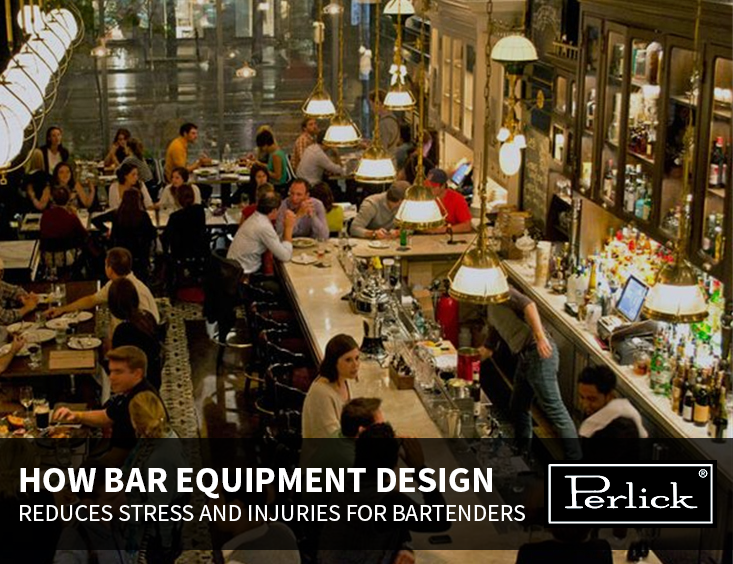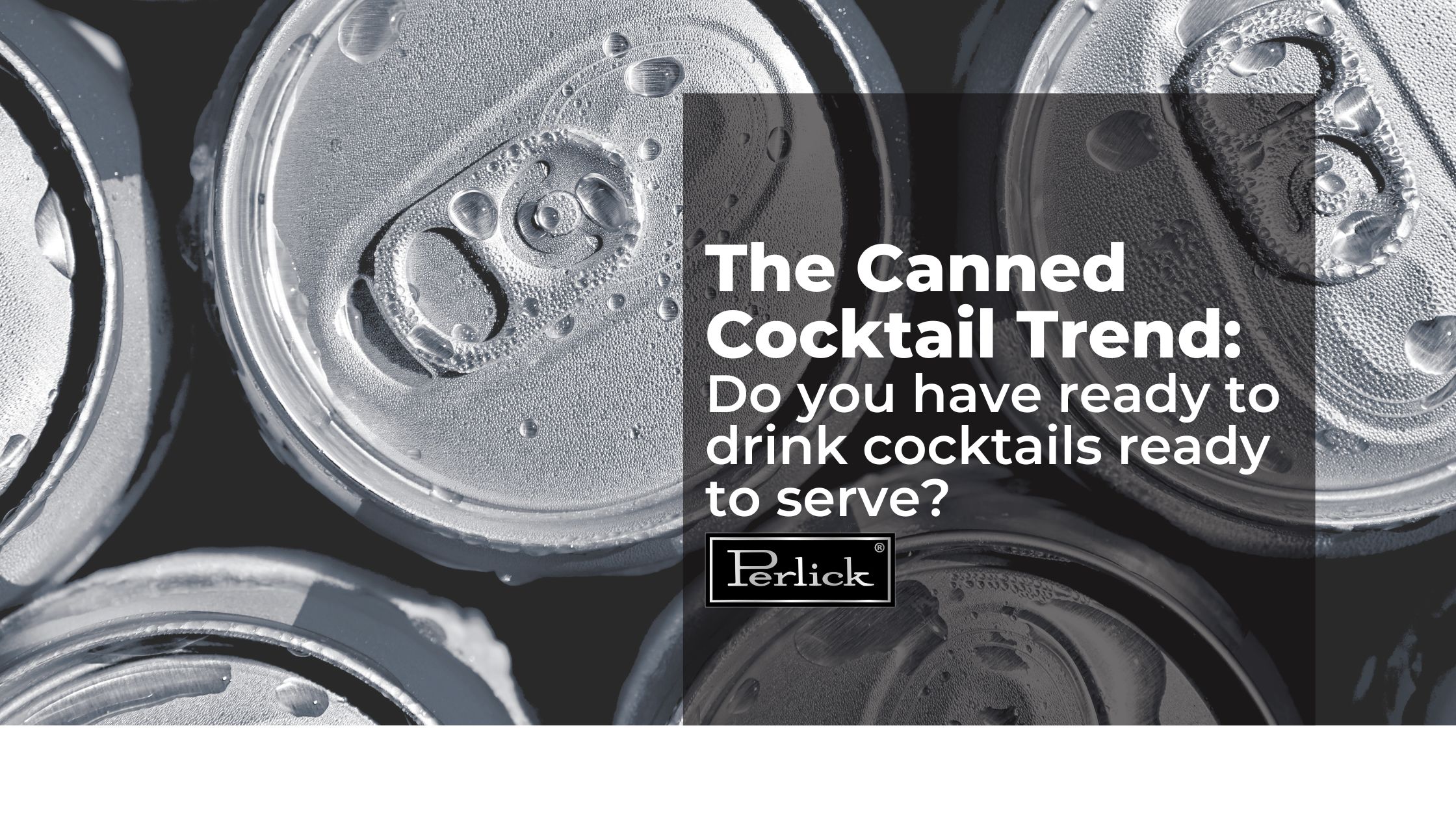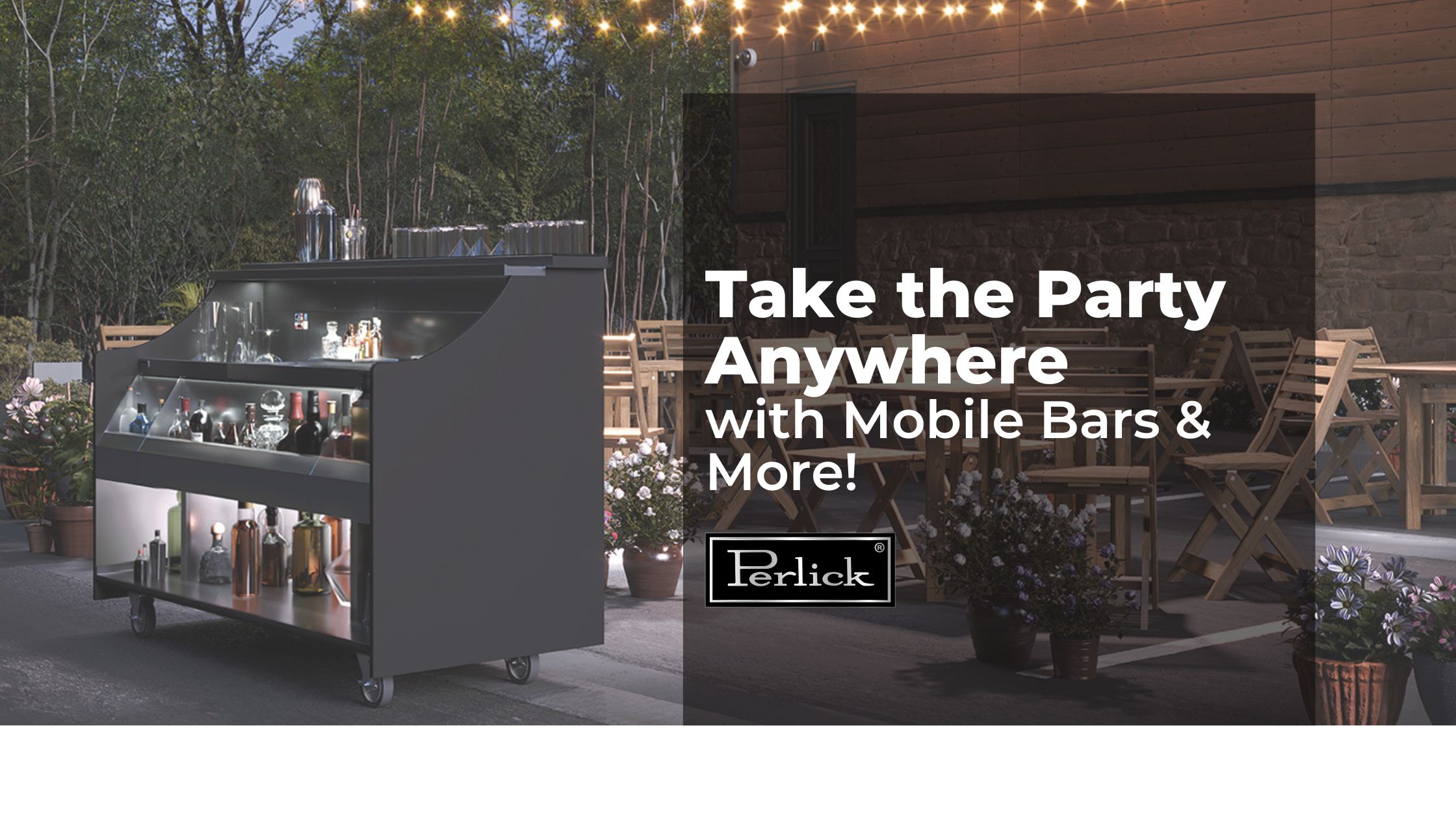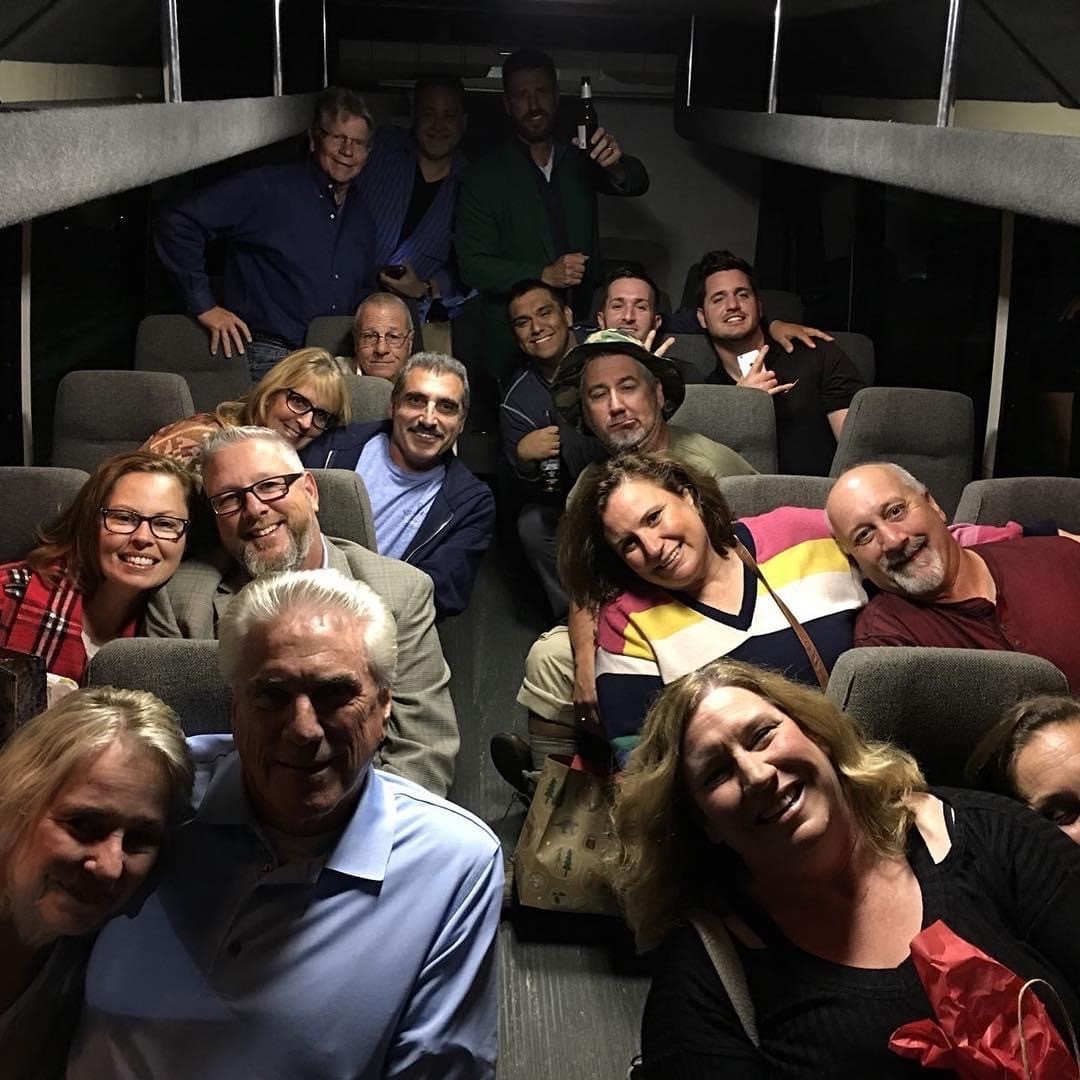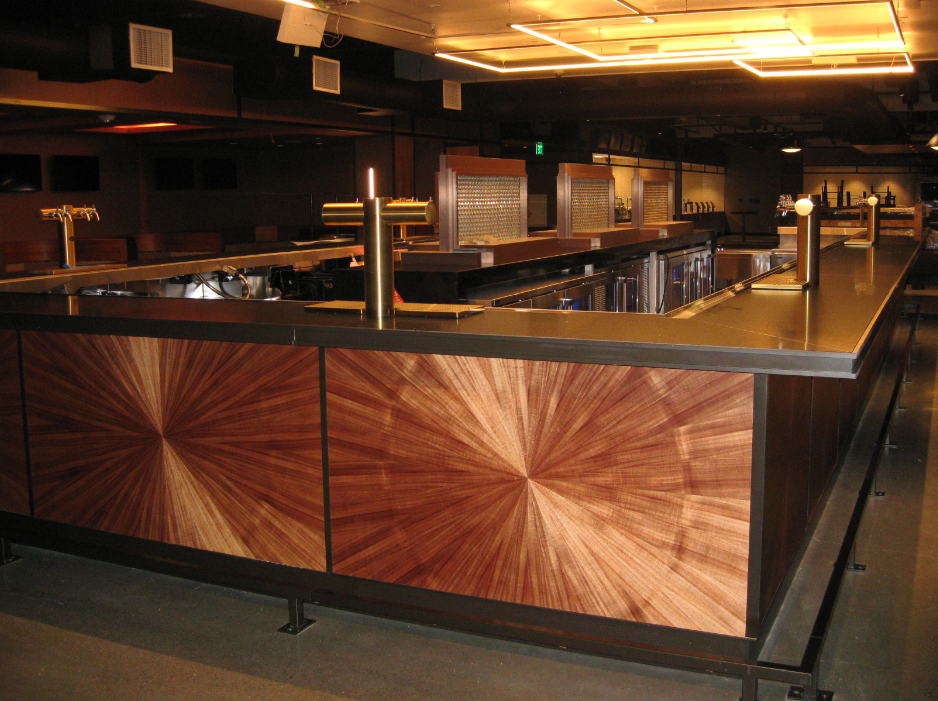Bumped, bruised, scratched, and scraped. That should be the description of a prizefighter after twelve rounds, not a bartender after an eight hour shift. But bartending can be a demanding job that is both physically and mentally draining. Luckily, there are ways to reduce stress and injuries for bartenders, and one solution is through bar equipment design.
In a recent report, U.S. News & World Reports listed bartending as one of the 22 most stressful jobs of 2017. To put that into context, paramedics, police officers, and construction workers also made the list.
And that makes sense.
Bartenders spend a majority of their work hours on their feet, dealing with, at times, not so forgiving customers, with limited opportunities to relax. In most bars, bartenders are restricted to a small, confined space where they do most of their work taking orders and crafting drinks. The constant bending, reaching, and walking can have long term effects on their backs, hips, and knees. Tobin Ellis, designer of the Tobin Ellis Cocktail Station, put it best in a recent interview with NBC News:
“Career bartenders know that at some point they will probably be dealing with a host of repetitive stress injuries including chronic back problems, rotator cuff injuries, carpal tunnel and lateral epicondylitis. Most bars are designed by architects or designers, who are usually unaware of the unique physical challenges a bartender faces. Add to that that most bar equipment has not been redesigned since the 1950s and you have a recipe for bruises, scrapes, and sore feet, backs and legs. This is the opposite of what the Occupational Safety and Health Administration recommends in what they call a ‘neutral work position.’”
When Tobin Ellis and Perlick teamed up to create the award-winning Tobin Ellis Cocktail Station, it was with a bartender’s well-being in mind. After all, shouldn’t bar equipment be designed for bartenders?
The Tobin Ellis Cocktail Station’s ergonomically designed features help to eliminate common pain points for bartenders. Everything a bartender needs to be efficient is within arm’s reach.
Refrigerated storage for garnishes are easily accessible without leaving the work area. A narrower ice bin brings bartenders closer to the customers without having to stretch across the bar to deliver cocktails. The expertly designed tool caddy has a place for every piece of a bartender’s arsenal, removing the need for digging and wasting valuable time. The curved rail design for liquor bottles surround the bartender, reducing steps and increasing output.
This “zero-step bartending” approach means less wear and tear on a bartender’s body. This allows them to perform at an optimal speed and efficiency. And that leads to more a profitable bar operation.


